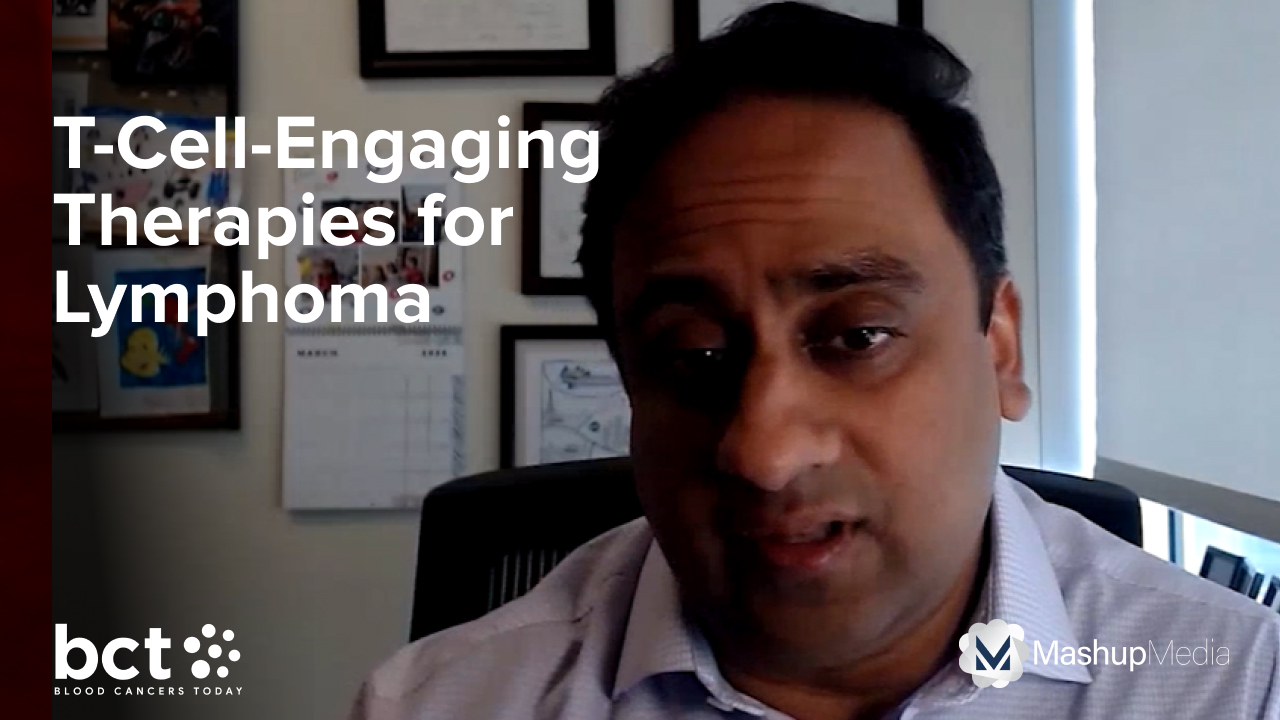
As 2023 came to a close, the Blood Cancers Today Editorial Board shared their highlights from the year and their hopes for the future.
2023 Brings Advancements in Acute, Chronic Leukemias
Elias Jabbour, MD
Associate Editor
MD Anderson Cancer Center
The year 2023 marks a year filled with novel treatment options for patients with hematologic malignancies.
In acute lymphoblastic leukemia (ALL), we have transformed a once dire diagnosis into one where patients have a substantial chance at long-term survival. For younger patients, the early integration of immunotherapy, through pivotal or randomized trials, has demonstrated its role in significantly improving survival rates. Today, in adult patients, the long-term survival rate is approaching 80%, which is very close to what we obtain in the pediatric setting.
In Ph-positive ALL, we are combining tyrosine kinase inhibitors (TKIs) with immunotherapy treatments such as blinatumomab. The promising outcomes of this combination have been published this year and further updates will be presented at the American Society of Hematology (ASH) Annual Meeting. The three-year survival rate is 90%, which is phenomenal.
In older patients, we are performing well. Additionally, we’ve made progress in five-year survival, now at 40% to 50%, a significant increase from the historical 10%, owing to the upfront integration of immunotherapy. This approach is being tested in a forward-looking manner, and we’re eagerly awaiting the results of randomized trials to confirm and further improve outcomes.
One of the novel treatment options we gained this year is subcutaneous blinatumomab, which produced very good results in an early-stage trial. The responses are overwhelmingly positive, with high measurable residual disease negativity. The hope is to administer subcutaneous blinatumomab upfront in all patients with ALL.
Therefore, in the realm of ALL treatment, there are numerous discoveries and novelties on the horizon—stay tuned for further updates.
In acute myeloid leukemia (AML), the addition of venetoclax to chemotherapy has already led to survival of 70% in younger patients, which is very good. In older patients, we are building on the backbone of a hypomethylating agent (HMA) and venetoclax together.
We are building on that approach with a triplet therapy consisting of cladribine, low-dose cytarabine, and venetoclax, which has shown very positive outcomes. This regimen is enabling patients to undergo transplantation with a survival rate of 70%—a significant advancement.
In fact, rather than a single disease, AML is a spectrum of diseases. Therefore, in treating AML, it’s crucial to identify specific targets to improve treatment outcomes. Over the past year, we’ve witnessed the emergence of new IDH1 and IDH2 inhibitors, as well as targeted therapies that home in on CD123 and other antigens.
In AML, we are witnessing advancements akin to those in ALL, though not yet at the same level. It’s important to highlight that a significant breakthrough in acute leukemia treatment has been the development of menin inhibitors. They have shown promise for patients with KMT2A-rearranged disease or NPM1 mutations who did not respond to previous therapies. Currently, these patients are experiencing positive responses, and there is optimism for even further improvement in outcomes. Therefore, menin inhibitors are certainly worth watching in the evolving landscape of leukemia treatment.
I think we can say chronic lymphocytic leukemia (CLL) is a curable disease. We’re already using B-cell lymphoma 2 inhibitors and Bruton’s tyrosine kinase inhibitors in CLL treatment. We are using the combination of these agents in younger patients in particular, with the aim of offering a finite therapy with higher rates of molecular remission and long-term cure.
As for chronic myeloid leukemia, we have at our disposal novel TKIs for both initial and relapse treatment phases. Notably, agents like asciminib, an allosteric inhibitor, and ponatinib are expanding our treatment armamentarium. Additionally, a variety of other novel agents are currently under investigation. Among them, olvermbatinib is showing very promising activity, with meaningful responses in patients with ponatinib-resistant disease.
In 2023, we saw data with luspatercept in newly diagnosed low-risk myelodysplastic syndromes (MDS) presented at the 2023 ASCO® Annual Meeting and the European Hematology Association 2023 Congress. These data from a randomized, phase III trial led to the approval of luspatercept in the frontline indication for lower-risk, transfusion-dependent patients.
We’ve also seen data from the IMERGE randomized trial in the relapse practice setting with randomization to either imetelstat or standard of care. Imetelstat, which is a telomerase inhibitor, has shown activity, and we are awaiting the approval of this drug, too, in the near future.
In high-risk MDS, magrolimab, a CD47 antibody, unfortunately did not succeed, but we’re eagerly awaiting the combination of HMA/venetoclax trials and hoping for a positive result to further improve outcomes.
In myelofibrosis, we’ve seen the approval of novel agents. Today, we have two new drugs that can overcome complications of thrombocytopenia and anemias: pacritinib and momelotinib, respectively. These drugs have opened the door for new combinations in myelofibrosis to further improve patient outcomes.
In conclusion, we are very fortunate to have these treatment options that improve patient outcomes available today. I look forward to what 2024 will bring.
2023 ASH Abstract Excitement
Kami Maddocks, MD
Associate Editor
Ohio State University
My mid-year highlight included so many exciting approvals and data presentations in the treatment of lymphoma that occurred through July 2023, so I have to say that the highlight of the second half of 2023 was reading through the ASH abstracts and seeing the BOVen study data for the frontline treatment of mantle cell lymphoma. I look forward to the full data presentation.
Rapid Integration of Immunotherapies for the Treatment of Multiple Myeloma
Thomas Martin, MD
Associate Editor
University of California, San Francisco
Helen Diller Family Comprehensive Cancer Center
There are now five novel immunotherapies approved for use in patients with relapsed or refractory multiple myeloma (MM) who have received at least four prior lines of therapy (PLT), including two chimeric antigen receptor (CAR) T-cell therapies, two bispecific antibodies (BsAb) targeting BCMA, and one BsAb targeting the cell surface protein GPRC5D. These agents have, in general, shown overall response rates (ORRs) of >60% and progression-free survival and overall survival (OS) rates of >12 months and >18 months, respectively, greatly eclipsing all other therapies previously tested in these heavily pretreated patients. Thus, there is a great deal of interest in identifying the best agents and optimal sequence for these therapies.
Which should come first, CAR-T or BsAb? And which should be targeted, BCMA or GPRC5D? The choice may be different depending on the individual patient. In addition, there are numerous trials investigating these and other agents in earlier lines of therapy (eg, frontline therapy, maintenance therapy, and patients who have received 1 to 3 PLT). Many anticipate that CAR-T will replace autologous transplant as part of frontline therapy and that BsAb therapy may be most effective as maintenance therapy or for early relapse. Undoubtedly, the next five years will bring many changes to the MM treatment landscape, with immunotherapies dominating the scene and improvements in OS and potential cure being the end goal.
Good Winter Reading
Jerald Radich, MD
Associate Editor
Fred Hutchinson Cancer Center
I don’t know about you, gentle readers, but for me, it is hard to think about personal highlights in a year with so many global lowlights. But I’ll weigh in on a highlight from my friend and colleague Fred Appelbaum, MD, who published Living Medicine, a history of the development of bone marrow transplantation. It prominently features my first boss, E. Donnall Thomas, MD, who won the Nobel Prize for his major contribution to transplant medicine in 1990. It’s a lively read about hard thinking, hard work, compassion, and persistence. For those of you who didn’t have the pleasure and honor of knowing Don, I’m sorry, but this is your chance to get to know him through Fred’s great read.
Immunotherapy Comes of Age for LBCL
Laurie Sehn, MD, MPH
Associate Editor
BC Cancer Centre for Lymphoid Cancer
This year, the era of immunotherapy for large B-cell lymphoma (LBCL) has most certainly come of age. While the potential of CAR T-cell therapy had already been recognized, sufficient long-term follow-up has enabled the term “curative” to be applied. ZUMA-1 evaluated the benefit of the CD19-directed CAR T-cell therapy axicabtagene ciloleucel (axi-cel) in patients with LBCL who had received at least two prior lines of therapy. With a median follow-up of 63.1 months, five-year event-free survival and OS were 30.3% and 42.6%, respectively, demonstrating sustained remission in a substantial proportion of patients (Blood. 2023;141[19]:2307-2315. doi:10.1182/blood.2022018893).
In addition, longer follow-up from ZUMA-7, which compared second-line axi-cel to the standard-of-care approach of salvage therapy and autologous stem cell transplantation in refractory and early-relapsing patients with LBCL, demonstrated an improvement in OS for the CAR T-cell therapy arm (N Engl J Med. 2023;389[2]:148-157. doi:10.1056/NEJMoa2301665).
This finding strongly supports a shift in the treatment paradigm, establishing CAR T-cell therapy as the preferred approach for high-risk patients in the second-line setting. While CAR T-cell therapy has firmly established itself as an integral therapy for relapsed or refractory LBCL with curative potential, maturing data on the value of bispecific antibodies have led to the approval of several agents in 2023. Glofitamab and epcoritamab are CD20×CD3-targeted bispecific antibodies designed to bring T cells in proximity with BCL to ignite a T-cell response. Both received approval from the US Food and Drug Administration this year for the treatment of LBCL after at least two prior lines of therapy based on pivotal phase II data in highly refractory patient populations, one-third of which had been exposed to CAR T-cell therapy (N Engl J Med. 2022;387[24]:2220-2231. doi:10.1056/NEJMoa2206913; J Clin Oncol. 2023;41[12]:2238-2247. doi:10.1200/JCO.22.01725).
These studies demonstrated ORRs of greater than 50% and complete response rates of approximately 40%, with many responding patients achieving durable benefit. While longer follow-up will be required to ascertain the curative potential of bispecific antibodies, numerous ongoing combination trials in earlier lines of therapy will undoubtedly serve to further establish their role.






 © 2025 Mashup Media, LLC, a Formedics Property. All Rights Reserved.
© 2025 Mashup Media, LLC, a Formedics Property. All Rights Reserved.